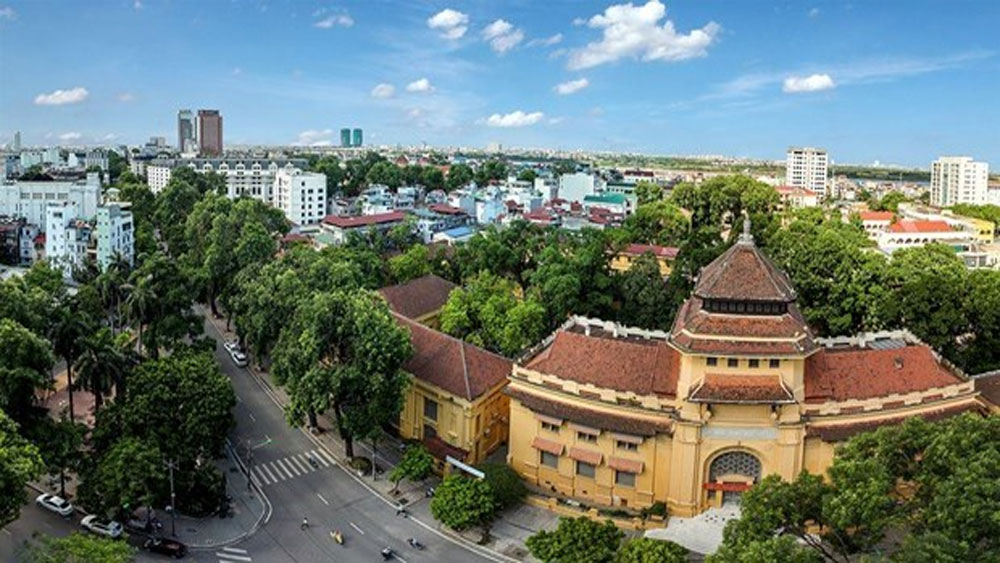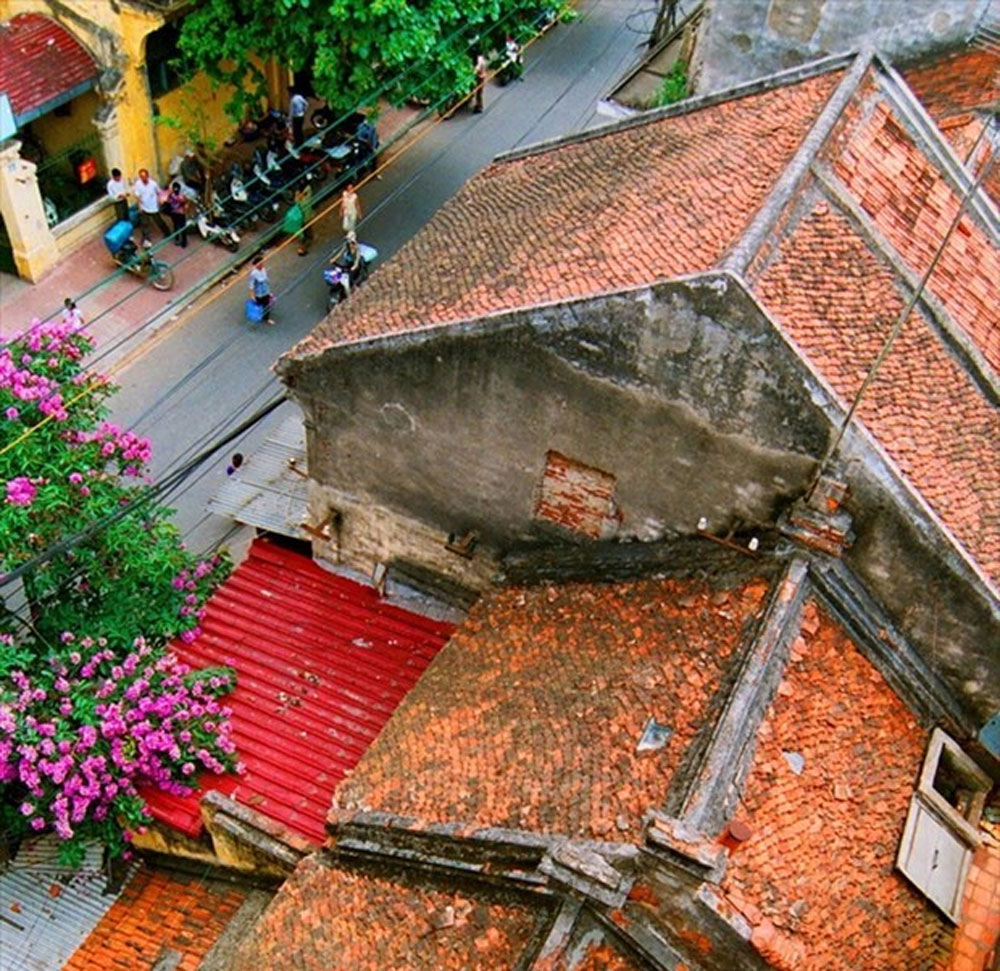Hanoi charming with unique architecture
Ancient architecture in the Old Quarter
Whenever mentioning Hanoi, it is impossible not to notice the Old Quarter, which has earned Hanoi the name “A city of 36 streets”.
 |
|
A corner of Hanoi. |
According to the history, the Hanoi Old Quarter was formed in around the 10th century, and flourished from the 15-16th century. It sprawls over 82ha to the east of the Thang Long Imperial Citadel, and now spreads over 10 wards of Hoan Kiem district – the heart of Hanoi.
Though called “Hanoi – 36 streets”, the Old Quarter in fact has more than 36 streets. It is a common name that has been widely recognised.
The Old Quarter used to be a place where people from all around the Northern Delta gathered and then turned it into the busiest area of the city, with craft and trade activities. Each street housed craftsmen from well-known craft villages and became a miniature village in the heart of Hanoi.
Each street is also named after the type of goods or service for sale, starting with the word “Hang” (goods), such as Hang Duong, Hang Bac, Hang Mam, Hang Chinh, Hang Ma, Hang Vai, and more.
Though now many items are no longer available for sale on several streets, they are still remindful of a very special period in the Vietnamese history.
The old quarter has a very unique urban feature, where streets are bustling all the time, but still retains the thousand-year traditional cultural values of the capital land.
Hanoi remembered for French colonial buildings
 |
|
A corner of Hanoi Old Quarter. |
Hanoi’s beauty is not only shown in the Old Quarter, but also a blend of western and oriental architecture, notably works built in the late 19th and early 20th centuries such as buildings in the classical French style, luxury villas owned by French officials or wealthy Vietnamese working for foreigners.
Up to 1,586 French-style buildings and villas, built over 100 years ago, are conserved at present. As many as 562 of them are used by individuals and the remaining owned by the State.
As the first French-built iron bridge crossing the Red River, Long Bien bridge has spanned three centuries, witnessing the wars against French colonists and US imperialists, and the development of the capital city. The mixture of classical and contemporary architecture has made the bridge uniquely special.
Meanwhile, the Hanoi Opera House was modeled after the famous Palais Opera Garnier in Paris. Its construction was completed in 1911 on August Revolution Square.
Formerly the Governor General of Indochina's Palace, the majestic Presidential Palace was built between 1900 and 1902. Most of the villas in the area were built in the style of northern France and feature sloping roofs and decorative elements over the doors and on the roofs.
Hoa Loa prison was first built by the French to incarcerate Vietnamese prisoners but was later used to hold American prisoners of war.
It is both a testimony to the indomitable fighting history of Vietnamese revolutionary soldiers, and a conviction of the barbarous prison regime under the French colonial rule.
Skyscrapers rise up in construction boom
 |
|
On Thang Long boulevard. |
In order to understand how the post-war Hanoi is today, it is probably the best to take the elevator to the 67th floor of the second tallest building in Southeast Asia, the Hanoi Lotte Centre – a well-known shopping mall, office and apartment complex.
Looking at the city from there, more and more buildings of this kind are on the way. Apartments are also being built in great quantity to supply accommodation for a huge population of the modern Hanoi.
Another high building is Keangnam tower - the highest skyscraper of Hanoi so far. The complex consists of one 72-story mixed-use tower with the height of 350m and two 48-storey hotel twin towers.
Source: VNA
 Bắc giang
Bắc giang















Reader's comments (0)